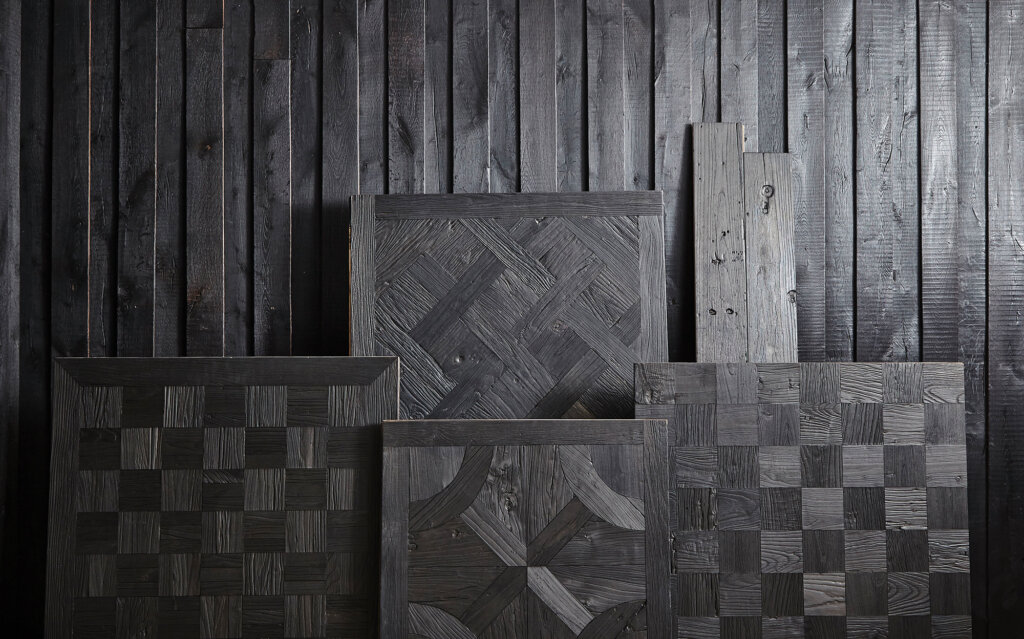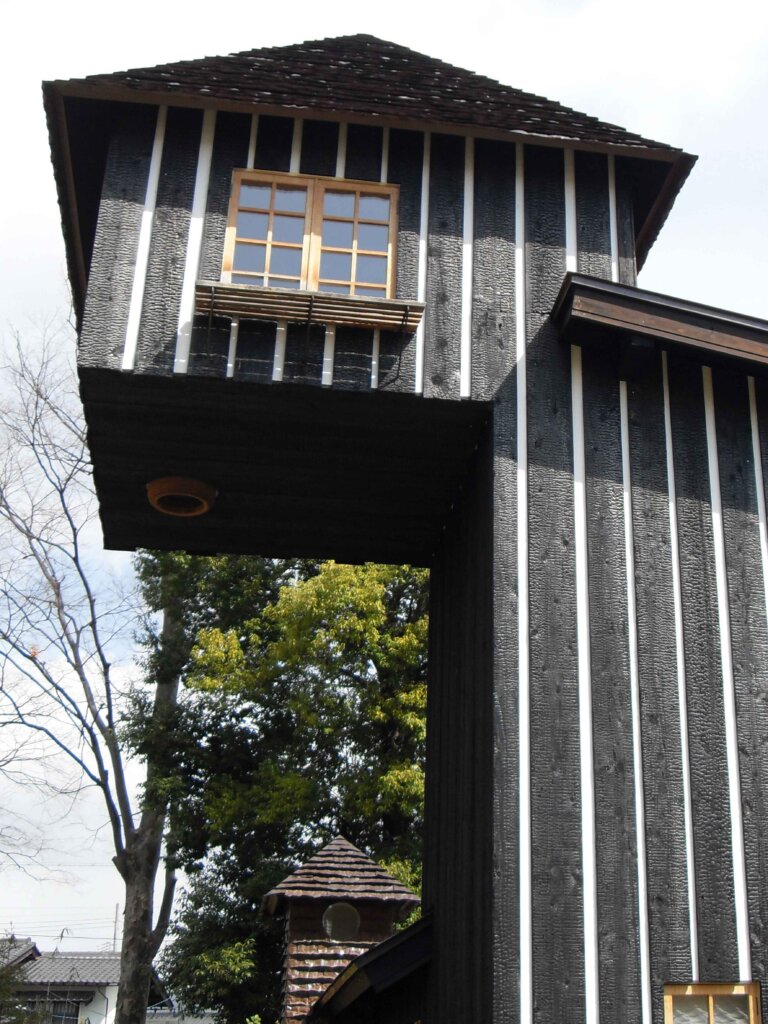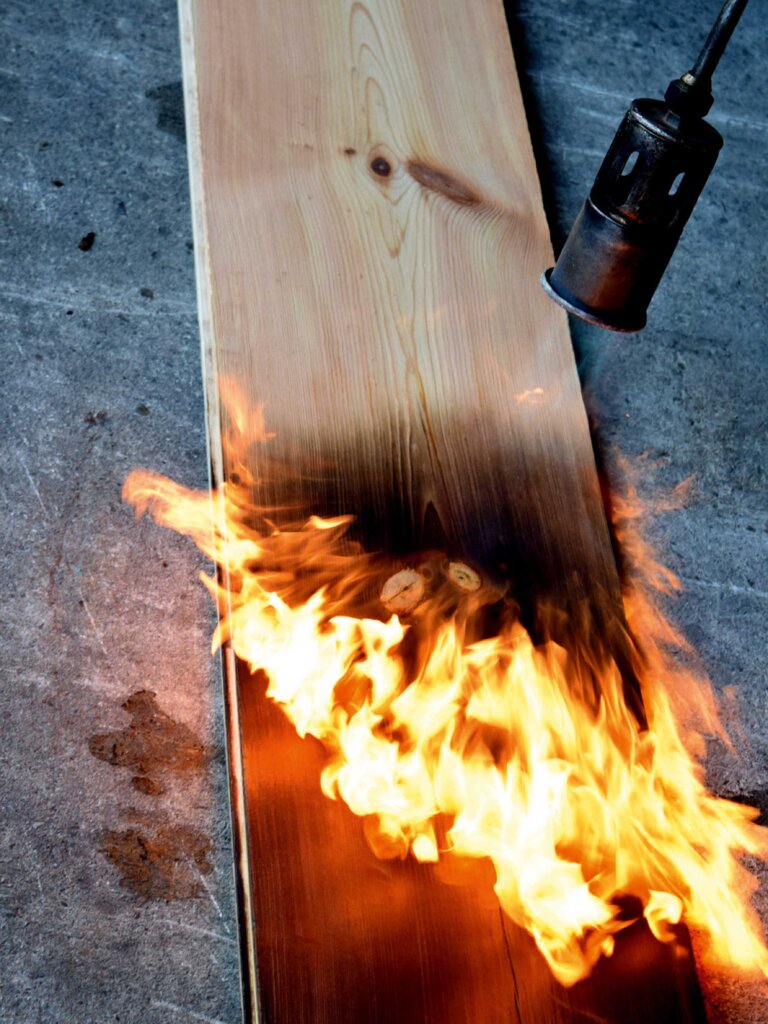DEFINITION
‘Yaki’ means burn with fire, ‘sugi’ means cedar. It is a traditional Japanese method of charring the surface of cedar boards to preserve them.
A BRIEF HISTORY
An increasing number of Western architects and designers are incorporating dark charred notes into their concepts by using a process resulting in Yakisugi; a centuries-old Japanese technique for preserving and finishing wood.
Since the early 1700s the technique has been used by the construction industry to improve the strength and imperviousness of wood, which was originally used as
natural cladding and weatherproofing Japanese buildings.
Interestingly, up to the 1970s Yakisugi was seen as provincial, used only for farm buildings or traditional villages. The resurgence in this centuries old technique can be attributed to contemporary architects including Terunobu Fujimori, known for his Yakisugi House.

Woodworks Carbonised collection: Images clockwise from top right
Augite Plank, Obsidian Plank, Agate Checkerboard, Hematite Parquet de Ardeche, Jet Parquet de Versailles

AESTHETIC APPEAL
Currently trending in modern architecture, you can expect the revival of this centuries old practice to be seen in exterior and interior designs alike.
Different effects can be achieved depending on wood species, burn intensity, texture and finishes – which all serve to highlight the natural beauty of the wood grain in a unique way.
This bold choice provides the ideal aesthetic for walls and floors in both rustic and contemporary spaces. Plus, the surface design of Yakisugi wood allows it to be mixed with a multitude of different materials and finishes with ease.
This technique is ideal for applications and designs that require the character of wood with
a little more intrigue.
PRACTICAL BENEFITS
This surface carbonisation process interestingly strengthens (as opposed to damages) the natural material. By removing moisture from the wood, you are left with improved hardness and durability.
Additionally, when wood is charred it becomes more water resistant as the process closes the timber pores.
Being a natural way to darken wood, the whole technique is very environmentally friendly. There are no chemicals used in our Yakisugi flooring so they have low VOC levels meaning they aren’t harmful to people or the planet.
As a totally sustainable solution, at the end of the floor’s life cycle, they can be fully recycled, like our Woodworks Carbonised collection.
